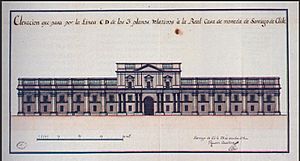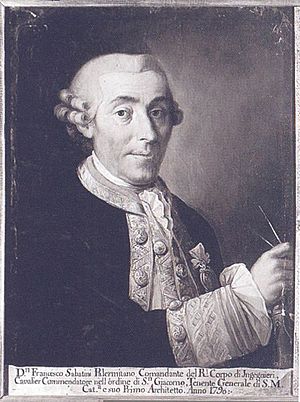Joaquín Toesca facts for kids
Gioacchino Toesca e Ricci (1745–1799) was an Italian architect. He is better known as Joaquín Toesca, especially in the Spanish Empire, which was a large territory ruled by Spain. Joaquín Toesca mostly worked in Chile. He designed buildings in the Neoclassical style, which was popular at the time. He also built some Baroque style buildings.
Early Life and Studies
Joaquín Toesca was born in Rome, Italy, in 1745. He began studying architecture with a famous teacher named Francesco Sabatini. When he was about 15 years old, he moved to Madrid, Spain. Later, he continued his education in Barcelona, where he studied mathematics.
Designing Buildings in Chile

In 1780, Joaquín Toesca traveled to South America. He went to Santiago, which was the capital of the Captaincy General of Chile. This was a part of the Spanish Empire. The Governor, Agustín de Jáuregui, and the Archbishop, Santiago Manuel de Alday y Aspée, asked him to come. They wanted him to design the Santiago Cathedral.
Besides the Cathedral, Toesca also worked on plans for the Palacio de la Moneda. This building was meant to be the royal mint, where coins were made. Today, it is the presidential palace of Chile.
Joaquín Toesca passed away in 1799. He did not live to see his two biggest projects, the Cathedral and the Palacio de la Moneda, finished. However, he completed many other important works. These included the city hall of Santiago, known as the Cabildo de Santiago. He also designed the San Juan de Dios Hospital.
Toesca also built tajamares, which are levees. These were very important for protecting the city from floods from the Mapocho River. He also helped build the Santo Domingo Church in Santiago. His designs usually followed the Neoclassical style of that time. Toesca had a big impact on the architecture of Santiago, both through his own work and through the many students he taught.
See also
 In Spanish: Joaquín Toesca para niños
In Spanish: Joaquín Toesca para niños


